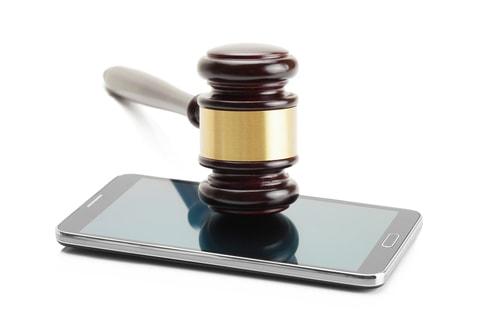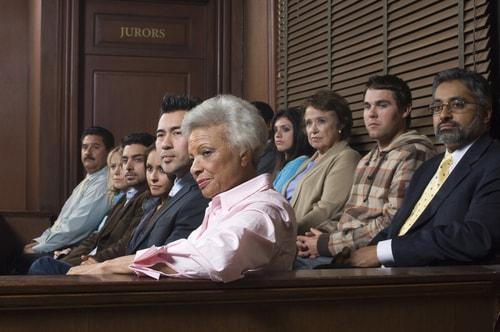 When you legally enter onto property owned by another person or entity, the owner of the property assumes a certain level of responsibility for keeping you safe. The degree of responsibility depends on why you are on the property, but unless you are trespassing, you have the right to assume that the property will be reasonably free of hazards that could cause you to slip and fall. Unfortunately, not all property owners are as vigilant as they should be, and thousands of people are injured in slip and fall accidents each year.
When you legally enter onto property owned by another person or entity, the owner of the property assumes a certain level of responsibility for keeping you safe. The degree of responsibility depends on why you are on the property, but unless you are trespassing, you have the right to assume that the property will be reasonably free of hazards that could cause you to slip and fall. Unfortunately, not all property owners are as vigilant as they should be, and thousands of people are injured in slip and fall accidents each year.
Invitees and Licensees
There are two types of visitors that are generally offered protection under Connecticut’s premises liability laws. The first category consists of invitees who, as the name suggests, are on the property by implied or express invitation by the property owner. Perhaps the most common example of an invitee is a customer at a retail store. Invitees are afforded the highest level of responsibility by the property owner.
 Another court has issued a ruling that effectively tells police, “Just because you are able to track people does not mean that you are allowed to do so.” The decision was handed down by an appeals court in Washington D.C.—the District’s equivalent of a state appellate court—and addressed the use of cell-site simulator devices. The devices are more commonly known by the brand name StingRay and allow law enforcement to locate a cell phone by sending and receiving signals that imitate the performance of a cell tower. The ruling is the latest in a string of similar court decisions that have held the use of StingRays without a warrant to be a violation of a suspect’s Fourth Amendment rights in most cases.
Another court has issued a ruling that effectively tells police, “Just because you are able to track people does not mean that you are allowed to do so.” The decision was handed down by an appeals court in Washington D.C.—the District’s equivalent of a state appellate court—and addressed the use of cell-site simulator devices. The devices are more commonly known by the brand name StingRay and allow law enforcement to locate a cell phone by sending and receiving signals that imitate the performance of a cell tower. The ruling is the latest in a string of similar court decisions that have held the use of StingRays without a warrant to be a violation of a suspect’s Fourth Amendment rights in most cases.
Great Power
Cell-site simulators give the police the ability to track a cell phone and, sometimes, intercept phone calls and text messages. The problem, however, is that the simulators collect the same information from any other phone in the vicinity. As a result, the police can, in effect, track any cell phone without a person’s knowledge or consent. Civil liberty advocates say that such capabilities must be limited by requiring a warrant, as tracking a person’s cell phone without approval from the court constitutes an unreasonable search under the Fourth Amendment.
 When you have been involved in an auto accident, most advice from attorneys and insurance companies recommends against admitting fault or apologizing to the other party or parties involved. This is because car, truck, and motorcycle accidents are often the result of many factors in addition to your own behavior. Apologizing or admitting fault could cause the police, insurance claims adjusters, and investigators to take you at your word instead of looking more deeply into the circumstances the crash. The other drivers are also less likely to voluntarily take responsibility if you have already done so.
When you have been involved in an auto accident, most advice from attorneys and insurance companies recommends against admitting fault or apologizing to the other party or parties involved. This is because car, truck, and motorcycle accidents are often the result of many factors in addition to your own behavior. Apologizing or admitting fault could cause the police, insurance claims adjusters, and investigators to take you at your word instead of looking more deeply into the circumstances the crash. The other drivers are also less likely to voluntarily take responsibility if you have already done so.
Sometimes, a more in-depth investigation into an accident may lead to the discovery of evidence from unexpected sources, including security cameras installed on homes, government buildings, and private businesses in the vicinity of the crash. Footage from one such camera recently provided the proof a Prospect man needed to collect a large settlement following a motorcycle accident in Bethany.
 When a person is facing criminal charges and his or her case goes to a jury trial, there is a long list of rules that Connecticut courts must follow to ensure the trial is handled properly. Such rules address not only a suspect’s rights but also the process of the trial itself, including collecting a pool of potential jurors and selecting the appropriate number of jurors to decide the case. Jury selection is an important part of the criminal justice process, but at least one Connecticut judge believes that the current rules that govern jury selection should be amended to be more inclusive.
When a person is facing criminal charges and his or her case goes to a jury trial, there is a long list of rules that Connecticut courts must follow to ensure the trial is handled properly. Such rules address not only a suspect’s rights but also the process of the trial itself, including collecting a pool of potential jurors and selecting the appropriate number of jurors to decide the case. Jury selection is an important part of the criminal justice process, but at least one Connecticut judge believes that the current rules that govern jury selection should be amended to be more inclusive.
Peremptory Challenges
During jury selection, attorneys for both sides—prosecutors and defendants in a criminal trial—have a tool at their disposal known as a peremptory challenge. A peremptory challenge gives the attorney the ability to strike a prospective juror without a detailed explanation. Compared to a challenge for cause, peremptory challenges may be limited by jurisdictional rules. While a peremptory challenge does not require a justification, the U.S. Supreme Court ruled in 1986 that such challenges could not be used to strike a prospective juror solely on the basis of race.
 The moments after an auto accident can be extremely important in determining which driver’s insurance company should be paying for the resulting damages or injuries. In most cases, each driver provides a reasonably accurate account of what happened to the responding police officer, and the officer uses that information to file an accident report. Sometimes, however, the information provided by one or both drivers conflicts with the physical evidence or other individuals’ accounts of the accident. When this happens, crash investigators may need to find other ways to figure out exactly who was responsible.
The moments after an auto accident can be extremely important in determining which driver’s insurance company should be paying for the resulting damages or injuries. In most cases, each driver provides a reasonably accurate account of what happened to the responding police officer, and the officer uses that information to file an accident report. Sometimes, however, the information provided by one or both drivers conflicts with the physical evidence or other individuals’ accounts of the accident. When this happens, crash investigators may need to find other ways to figure out exactly who was responsible.
Event Data Recorders
You are probably aware that commercial airplanes are generally equipped with an electronic device that records flight data and other important details that could be important when a crash or an unexpected mechanical failure occurs. Commonly known as a “black box”—despite being bright orange so that it can be found more easily at a crash site—the device is actually called an “event data recorder” or EDR.
 The state of Connecticut is presently on pace to set a tragic record of more than 1,000 opioid-related deaths in 2017. If things continue on their current pace, 2017 will surpass last year’s record of 917 by a rather large margin. According to the Office of the Chief Medical Examiner, an average of nearly three residents are dying from accidental drug overdoses every single day. While the word is not one that should be used lightly, but experts throughout the state and across the nation have rightfully identified the country’s opioid problem as a true “epidemic.”
The state of Connecticut is presently on pace to set a tragic record of more than 1,000 opioid-related deaths in 2017. If things continue on their current pace, 2017 will surpass last year’s record of 917 by a rather large margin. According to the Office of the Chief Medical Examiner, an average of nearly three residents are dying from accidental drug overdoses every single day. While the word is not one that should be used lightly, but experts throughout the state and across the nation have rightfully identified the country’s opioid problem as a true “epidemic.”
Connecticut Governor Dannell P. Malloy has refused to sit quietly and let the issue go unaddressed. In fact, last month, he signed legislation for the fourth consecutive year aimed at curbing the crisis. This year’s new law may not be as far-reaching as those from the previous two years, it is a step in the right direction and was unanimously passed in both chambers of the state legislature.
 When a driver causes an accident because he or she was talking or texting on his or her cell phone, he or she is not likely to admit the truth to the police officer on the scene. Instead, it is often left to investigators and others working on behalf of the injured victim to prove that the at-fault driver was distracted at the time of the crash. Recent procedural changes in Connecticut, however, have made it easier for claimants to address distracted driving concerns following an accident.
When a driver causes an accident because he or she was talking or texting on his or her cell phone, he or she is not likely to admit the truth to the police officer on the scene. Instead, it is often left to investigators and others working on behalf of the injured victim to prove that the at-fault driver was distracted at the time of the crash. Recent procedural changes in Connecticut, however, have made it easier for claimants to address distracted driving concerns following an accident.
New Interrogatory Questions
Beginning on January 1, 2017, the Judicial Branch of the State of Connecticut amended the standard questionnaire—known as interrogatories—that injured victims send to defendants (and vice versa) during the discovery phase of car accident cases. For the first time, both parties in such a case must answer under oath prior to trial whether they “were using a cell phone for any activity including, but not limited to, calling, texting, e-mailing, posting, tweeting, or visiting sites on the Internet for any purpose, at or immediately prior to the time of the incident.”
 Throughout the United States, suicide is a serious yet under-discussed problem. Each year, more than 40,000 Americans succeed in taking their own lives, with countless more making one or more attempts. Suicide is now the second-leading cause of death for individuals between 15 and 34—only accidents claim more lives. For friends and family members of a suicide victim, the situation can be traumatic and life-changing, as they may feel like they have failed their loved one. Recently, however, a Massachusetts court ruled that a young woman who encouraged her boyfriend to kill himself must now serve at least 15 months in prison for involuntary manslaughter.
Throughout the United States, suicide is a serious yet under-discussed problem. Each year, more than 40,000 Americans succeed in taking their own lives, with countless more making one or more attempts. Suicide is now the second-leading cause of death for individuals between 15 and 34—only accidents claim more lives. For friends and family members of a suicide victim, the situation can be traumatic and life-changing, as they may feel like they have failed their loved one. Recently, however, a Massachusetts court ruled that a young woman who encouraged her boyfriend to kill himself must now serve at least 15 months in prison for involuntary manslaughter.
A Tragic Set of Facts
Three years ago, an 18-year-old man Massachusetts man committed suicide by filling his pickup truck cab with carbon monoxide in a store parking lot. As officials investigated the death, they found that the man’s girlfriend—a 17-year-old young woman—had been sending him messages via text and social media encouraging him to go through with his suicide plan. According to reports and court documents, the teen even allegedly told the young man to “get back in” when he got scared and got out of his carbon monoxide-filled truck.
 When you hear a news report or a read a newspaper article that refers to a violent crime, it is not uncommon to encounter the word “assault.” Depending on the circumstances of the offense and the jurisdiction, the word may be used in conjunction with the term “battery”—as in the “The suspect was arrested and charged with assault and battery.” But, what does assault entail? If you are facing charges for assault in Connecticut, it is important to understand what the law says.
When you hear a news report or a read a newspaper article that refers to a violent crime, it is not uncommon to encounter the word “assault.” Depending on the circumstances of the offense and the jurisdiction, the word may be used in conjunction with the term “battery”—as in the “The suspect was arrested and charged with assault and battery.” But, what does assault entail? If you are facing charges for assault in Connecticut, it is important to understand what the law says.
The first thing you should know is that there is not a separate offense known as “battery” in Connecticut. Almost any situation that involves an injury due to the use of violence, force, or a deadly weapon is categorized as a type of assault. State law provides three degrees of assault which range from Class A misdemeanors up to Class B felonies, and penalties may be increased depending on factors such as the age, condition, disability, or occupation of the victim.
 Every day across the country, thousands of car accidents occur and thousands of victims are injured as a result. When you are hurt in a car accident caused by another driver, you have the right to pursue compensation for your injuries from the at-fault party. But, what happens when you are in a car accident while on company time or in a company vehicle? While such situations may become more complicated than “normal” car crashes, if you are injured while driving a company car on the job, you may have additional avenues for collecting the compensation you need to put your life back on track.
Every day across the country, thousands of car accidents occur and thousands of victims are injured as a result. When you are hurt in a car accident caused by another driver, you have the right to pursue compensation for your injuries from the at-fault party. But, what happens when you are in a car accident while on company time or in a company vehicle? While such situations may become more complicated than “normal” car crashes, if you are injured while driving a company car on the job, you may have additional avenues for collecting the compensation you need to put your life back on track.
Third-Party Lawsuit vs. Workers’ Compensation
The Connecticut workers’ compensation program is designed to provide benefits for employees injured in the course of performing their jobs. In most cases, workers are eligible for workers’ compensation benefits regardless of who was at fault for their injuries. The workers’ compensation system also prevents most lawsuits filed by injured workers against their employers. Workers’ compensation benefits generally cover medical expenses, lost wages, and vocational retraining for employees who cannot return to their previous jobs.
 50 Founders Plaza
50 Founders Plaza

